What is the medical term for crabs. Pubic Lice (Crabs): Symptoms, Treatment, and Prevention – Medical Guide
What are pubic lice and how do they spread. How can you identify a pubic lice infestation. What treatments are effective against pubic lice. How can you prevent getting or spreading pubic lice.
Understanding Pubic Lice: The Basics
Pubic lice, scientifically known as Pthirus pubis and colloquially referred to as “crabs,” are tiny parasitic insects that infest human body hair. These minuscule creatures, measuring about 2mm in length, have a distinct grey-brown coloration that allows them to blend in with their surroundings. While their common name suggests a preference for pubic hair, these lice can actually inhabit various areas of coarse body hair, including the chest, armpits, and even facial hair and eyelashes.
Why are they called crabs? The nickname stems from their appearance – when viewed under magnification, pubic lice resemble miniature crabs, with their round bodies and claw-like legs perfectly adapted for grasping hair shafts.

Pubic Lice vs. Other Lice Species
It’s important to distinguish pubic lice from other types of lice that can infest humans:
- Head lice (Pediculus humanus capitis) – exclusively inhabit the scalp
- Body lice (Pediculus humanus corporis) – live in clothing and move to the skin to feed
- Pubic lice (Pthirus pubis) – prefer coarse body hair, especially in the pubic region
Unlike their cousins, pubic lice do not infest scalp hair. This distinction is crucial for proper identification and treatment.
Transmission and Risk Factors for Pubic Lice Infestation
Pubic lice are primarily spread through close physical contact, with sexual activity being the most common route of transmission. However, it’s a misconception that only sexually active individuals can contract pubic lice. These parasites can also spread through other forms of intimate contact or sharing of personal items.
Common Modes of Transmission
- Sexual contact (most frequent)
- Close body-to-body contact
- Sharing contaminated bedding, towels, or clothing (less common)
Can pubic lice jump or fly? Contrary to popular belief, pubic lice cannot jump or fly. They can only crawl, which limits their ability to spread but makes close contact particularly risky.
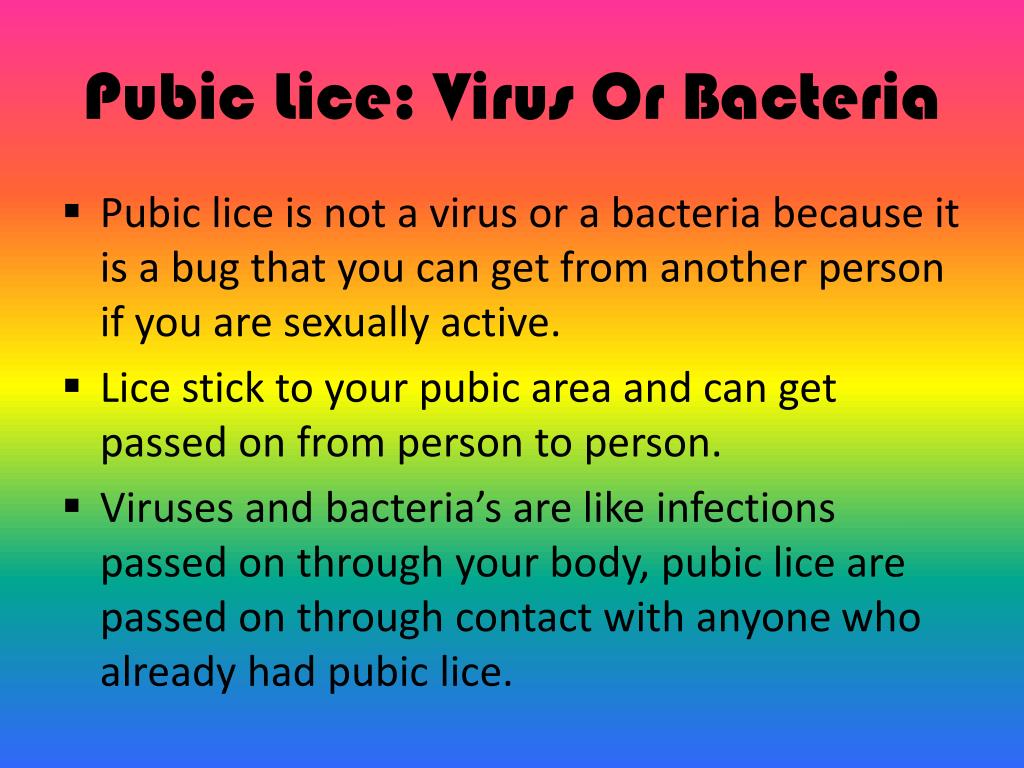
Debunking Myths About Pubic Lice
Several misconceptions surround pubic lice infestations:
- Myth: Only “dirty” people get pubic lice
- Fact: Personal hygiene has little impact on the likelihood of infestation
- Myth: Pubic lice can be contracted from toilet seats
- Fact: This is extremely unlikely, as lice cannot survive long away from a human host
- Myth: Pets can spread pubic lice
- Fact: Pubic lice are species-specific and do not infest animals
Recognizing the Signs and Symptoms of Pubic Lice
Identifying a pubic lice infestation early is crucial for prompt treatment and preventing spread. While these tiny parasites can be difficult to spot with the naked eye, there are several telltale signs that may indicate their presence.
Visual Clues of Pubic Lice Infestation
Upon close inspection, you may observe:
- Tiny, grey-brown insects clinging to hair shafts
- Small, oval, whitish eggs (nits) attached to hair follicles
- Pale blue or reddish-brown spots on the skin (caused by lice bites)
- Dark specks in underwear (lice droppings)
How quickly do symptoms of pubic lice appear after exposure? Symptoms typically develop within 5 to 7 days after infestation, though it may take up to several weeks for noticeable signs to manifest in some cases.
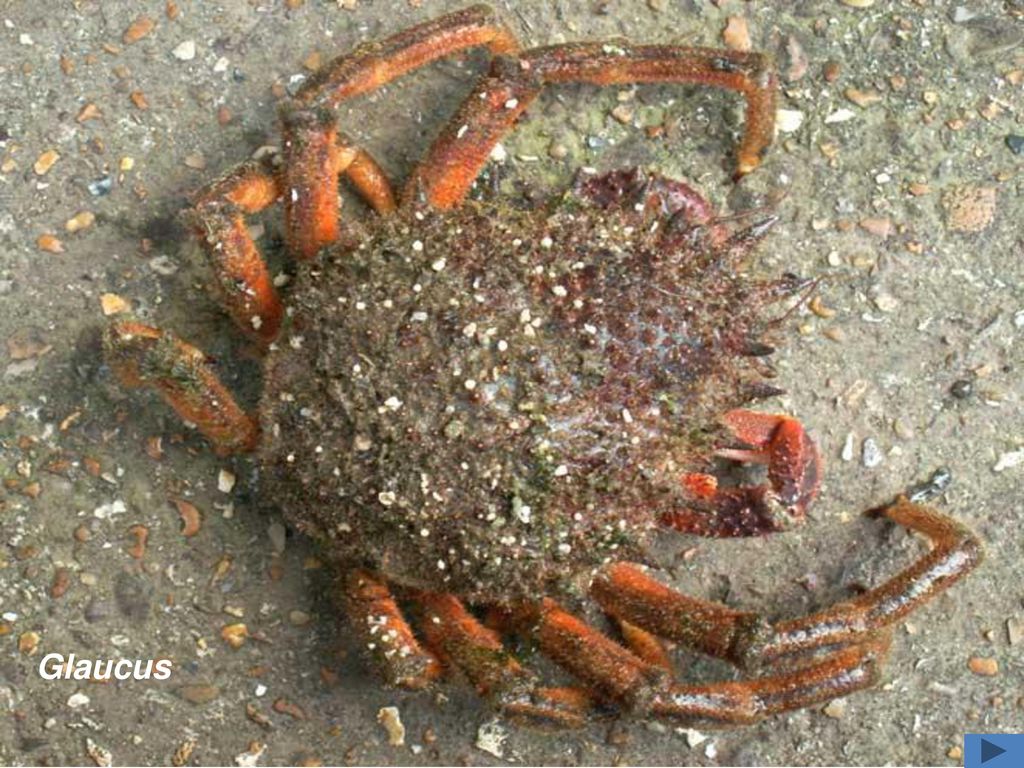
Common Symptoms Experienced
The most prevalent symptom associated with pubic lice is intense itching in the affected areas. This itching often worsens at night when the lice are most active. Other symptoms may include:
- Skin irritation or inflammation
- Visible bite marks or small wounds from scratching
- Crusted or sticky eyelashes (if lice have infested this area)
- Fatigue or irritability due to sleep disturbance caused by itching
Is it possible to have pubic lice without symptoms? While uncommon, some individuals may harbor pubic lice without experiencing noticeable symptoms, especially in the early stages of infestation.
Diagnosis and Medical Assessment of Pubic Lice
If you suspect a pubic lice infestation, seeking professional medical advice is crucial for accurate diagnosis and appropriate treatment. Healthcare providers, particularly those at sexual health clinics or general practitioners, are well-equipped to identify and manage pubic lice infestations.
The Diagnostic Process
During a medical assessment for suspected pubic lice, you can expect the following:
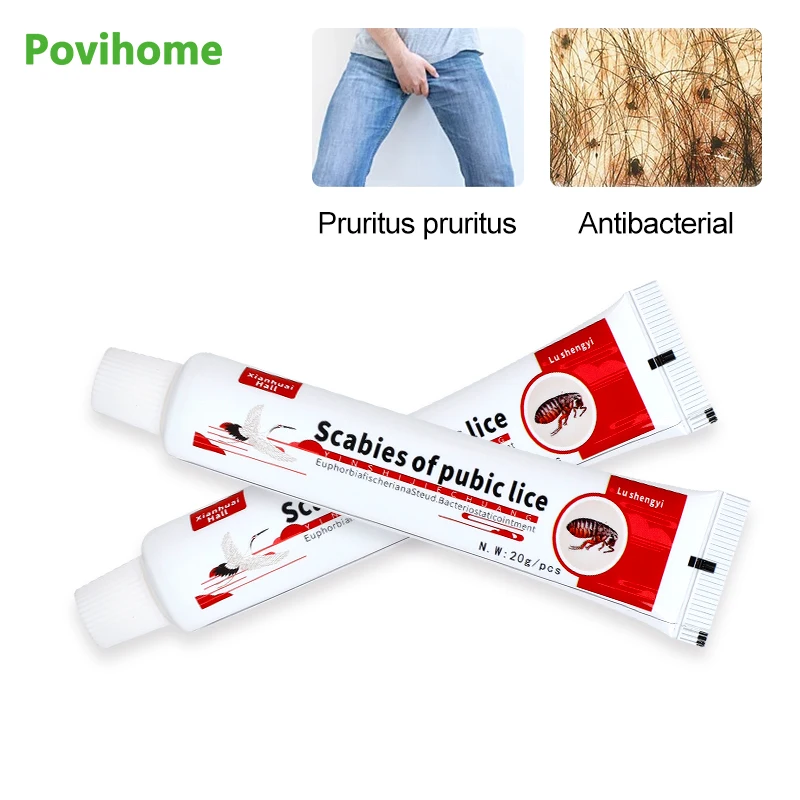
- Visual examination: The healthcare provider will closely inspect affected areas for signs of lice or nits.
- Use of magnification: A magnifying glass may be employed to better visualize the parasites.
- Combing technique: A fine-toothed comb may be used to collect and identify lice or eggs.
- Discussion of symptoms and potential exposure: The provider will inquire about your symptoms and possible routes of transmission.
How accurate is visual diagnosis of pubic lice? When performed by a trained healthcare professional, visual diagnosis of pubic lice is highly accurate. However, in cases of light infestation or early stages, additional methods may be necessary for confirmation.
Additional Considerations During Assessment
Given the primary mode of transmission, healthcare providers may also:
- Recommend screening for other sexually transmitted infections (STIs)
- Discuss contact tracing to notify potentially exposed partners
- Provide counseling on prevention and safe sexual practices
Effective Treatment Options for Pubic Lice Infestations
Once diagnosed, pubic lice infestations are highly treatable with proper medication and follow-up care. The primary goal of treatment is to eliminate all lice and eggs, preventing reinfestation and transmission to others.
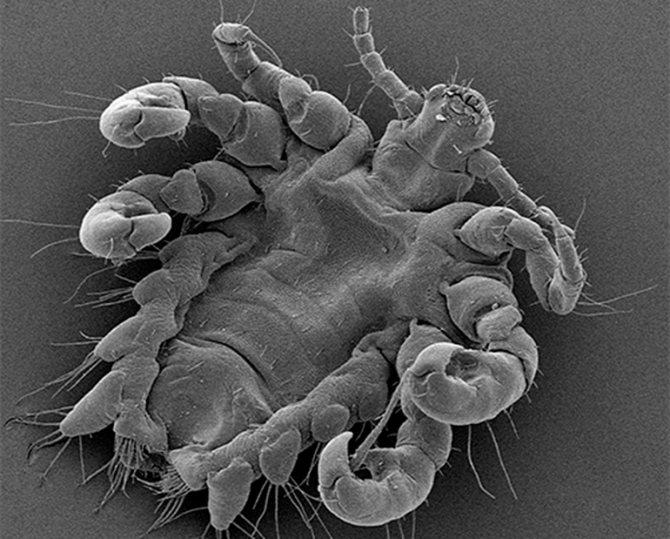
Topical Medications for Pubic Lice
The most common and effective treatments for pubic lice are topical insecticides, including:
- Permethrin 1% lotion or cream
- Pyrethrin-based shampoos
- Malathion 0.5% lotion
These medications are typically applied to the affected areas and surrounding skin, left on for a specified period, and then washed off. A second application is usually recommended after 7-9 days to ensure all newly hatched lice are eliminated.
How long does it take for pubic lice treatment to work? While the medication kills lice quickly, it may take several days for symptoms to fully subside. Complete eradication is typically achieved within 1-2 weeks with proper treatment.
Treatment Process and Follow-up
The treatment process for pubic lice typically involves:
- Applying the prescribed medication as directed
- Washing all clothing, bedding, and towels used in the past 2-3 days in hot water (at least 50°C)
- Vacuuming mattresses and upholstered furniture
- Abstaining from sexual contact until treatment is complete
- Treating all sexual partners from the past month simultaneously
- Returning for a follow-up appointment to ensure successful treatment
Are there any natural remedies effective against pubic lice? While some natural remedies are touted as lice treatments, there is limited scientific evidence supporting their efficacy. Medical-grade treatments remain the most reliable option for eliminating pubic lice.

Preventing Pubic Lice: Strategies for Protection
While complete prevention of pubic lice can be challenging, there are several strategies individuals can employ to reduce their risk of infestation and prevent transmission to others.
Personal Hygiene and Awareness
Maintaining good personal hygiene practices can help in early detection and prevention:
- Regular self-examination of pubic and other body hair
- Promptly addressing any unusual itching or skin changes
- Avoiding sharing personal items like towels or clothing
- Washing and drying clothes and bedding at high temperatures
Does shaving pubic hair prevent lice infestation? While shaving or waxing pubic hair may make it more difficult for lice to attach, it does not guarantee prevention. Lice can still infest short hair or move to other body areas.
Safe Sexual Practices
Given that sexual contact is the primary mode of transmission, practicing safe sex is crucial:
- Limiting sexual partners
- Having open discussions about sexual health with partners
- Avoiding sexual contact if you or a partner suspects an infestation
- Getting regular STI screenings, which may detect pubic lice
It’s important to note that while condoms are essential for preventing many STIs, they do not provide complete protection against pubic lice, as these parasites can inhabit areas not covered by condoms.
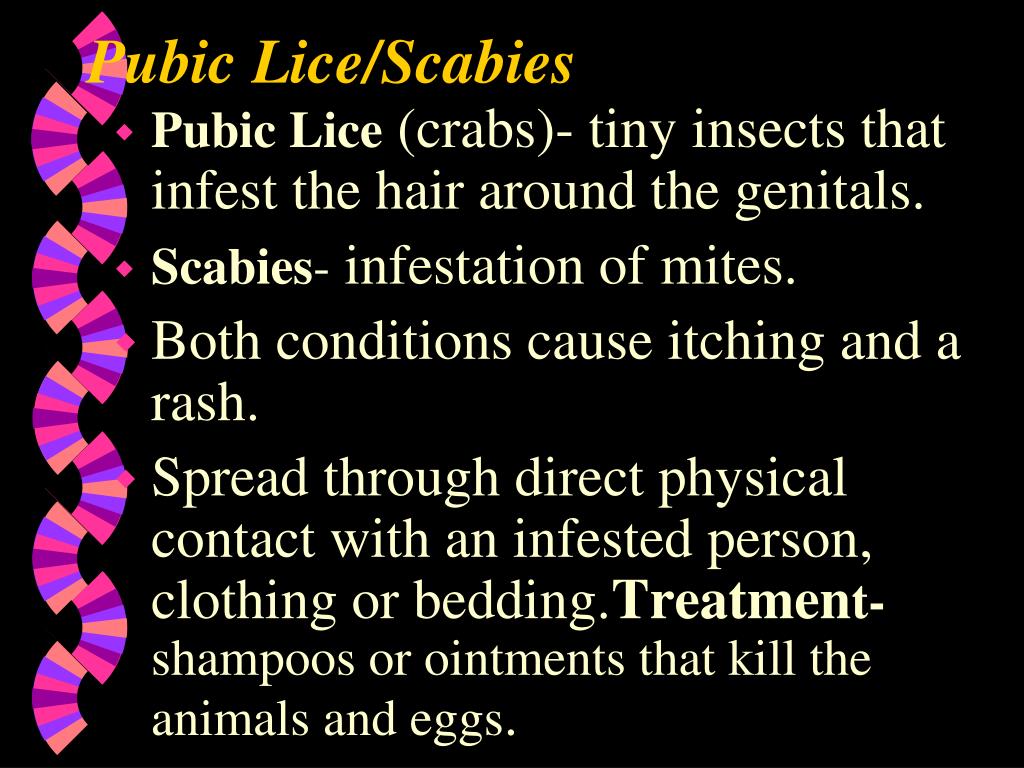
The Psychological Impact of Pubic Lice Infestations
While pubic lice are a treatable condition, the psychological impact of an infestation can be significant. Many individuals experience feelings of embarrassment, anxiety, or stigma associated with the diagnosis.
Common Emotional Responses
People dealing with pubic lice infestations may experience:
- Shame or embarrassment
- Anxiety about potential transmission to partners
- Fear of judgment from healthcare providers or others
- Stress related to treatment and prevention measures
- Concerns about future intimate relationships
How can healthcare providers address the psychological aspects of pubic lice infestations? Compassionate care, clear communication, and providing accurate information are crucial. Healthcare providers should normalize the experience, emphasize the treatable nature of the condition, and offer resources for emotional support if needed.
Overcoming Stigma and Misconceptions
Educating patients and the public about pubic lice can help reduce stigma:

- Emphasizing that infestations are not related to personal cleanliness
- Explaining the ease of transmission and commonality of the condition
- Providing clear, factual information about treatment and prevention
- Encouraging open communication with partners about sexual health
By addressing both the physical and emotional aspects of pubic lice infestations, healthcare providers can offer comprehensive care that supports patients’ overall well-being.
Public Health Implications and Global Prevalence of Pubic Lice
While pubic lice infestations are not typically considered a severe health threat, they do have public health implications, particularly in relation to sexual health and the potential co-occurrence with other sexually transmitted infections.
Epidemiology and Prevalence
Accurate global prevalence data for pubic lice infestations are limited due to underreporting and the often self-treated nature of the condition. However, some key points include:
- Estimated prevalence of 1-2% in the general population
- Higher rates among sexually active adolescents and young adults
- Potential seasonal variations, with some studies suggesting increased incidence in warmer months
- No significant gender disparity in infestation rates
Has the prevalence of pubic lice changed over time? Some studies suggest a potential decrease in pubic lice prevalence in recent years, possibly due to changing grooming habits. However, more research is needed to confirm this trend and understand its implications.

Public Health Strategies
Public health approaches to managing pubic lice infestations often focus on:
- Education and awareness campaigns
- Integration of screening into routine sexual health check-ups
- Ensuring access to effective treatments
- Promoting partner notification and treatment
- Monitoring for potential resistance to common treatments
By addressing pubic lice infestations as part of broader sexual health initiatives, public health officials aim to reduce transmission rates and improve overall population health.
In conclusion, while pubic lice infestations can be distressing, they are highly treatable and preventable with proper knowledge and care. By understanding the nature of these parasites, recognizing symptoms early, seeking prompt medical attention, and practicing safe behaviors, individuals can effectively manage and prevent pubic lice infestations. As with many aspects of sexual health, open communication, regular check-ups, and a non-judgmental approach are key to addressing this common but often overlooked condition.

Pubic lice – NHS
Pubic lice are tiny insects that can live on body hair, especially the pubic hair around the penis or vagina. They’re spread through close body contact, most commonly through sexual contact.
Pubic lice are sometimes also called crabs.
Check if you have pubic lice
Pubic lice are very small (2mm long) and grey-brown in colour.
They can be hard to spot, but sometimes you may be able to see them in your hair.
They most often live on pubic hair around the penis or vagina, but can also be found in hair on the chest, armpits, face and eyelashes. They do not affect hair on the head.
Other symptoms of pubic lice include:
- itching, which is usually worse at night
- small red or blue spots on your skin (lice bites)
- white/yellow dots attached to your hair (lice eggs)
- dark red or brown spots in your underwear (lice poo)
- crusted or sticky eyelashes, if they’re affected
Non-urgent advice: Go to a sexual health clinic or see a GP if:
- you think you might have pubic lice
Pubic lice will not go away without treatment.
If you’re sure you have pubic lice, you may be able to get treatment from a pharmacist.
What happens at your appointment
If you go to a sexual health clinic or GP surgery because you think you have pubic lice, a doctor or nurse will check your hair for lice.
They may check your pubic hair around your penis or vagina and any other areas that could be affected, such as your armpits, chest or eyelashes.
To help spot any lice, they might use a comb and a magnifying lens.
If they think you might have caught the lice during sex, they may ask about your sexual partners. They may also suggest getting tested for any sexually transmitted infections (STIs).
Treatment for pubic lice
The main treatments for pubic lice are medicated creams or shampoos that kill the lice.
You usually need to use the treatment on your whole body and leave it on for a few hours before washing it off. You’ll need to repeat this again a week later to make sure all the lice have been killed.
You may be asked to come back a week after you finish treatment, to check if the treatment has worked.
Any current or recent sexual partners should also be treated, even if they do not have symptoms.
How to stop pubic lice spreading
While you’re being treated for pubic lice, there are some things you can do to help stop the lice spreading to others and stop the lice coming back.
Do
wash your clothes and bedding on a hot wash (50C or higher), get them dry cleaned, or put them in a plastic bag for at least a week – this will help kill any lice
vacuum your mattress to remove any lice
How you get pubic lice
Pubic lice are mainly spread by close body contact, most commonly sexual contact.
The lice cannot jump or fly, but can climb from one person to another.
You can also catch the lice from clothes, bedding or towels used by someone with pubic lice, but this is rare.
How to avoid getting pubic lice
It can be hard to prevent pubic lice.
The only way to avoid getting them is to avoid having sexual contact (or sharing bedding or clothing) with anyone you know who has pubic lice, until they’ve been treated.
Condoms and other forms of contraception will not protect you from pubic lice. But it’s still a good idea to use condoms during sex because they reduce the risk of sexually transmitted infections (STIs).
Page last reviewed: 24 May 2022
Next review due: 24 May 2025
Pediculosis (lice, head lice, body lice, pubic lice, cooties, crabs)
Last Reviewed: October 2011
What is pediculosis?
Pediculosis is an infestation of the hairy parts of the body or clothing with the eggs, larvae or adults of lice.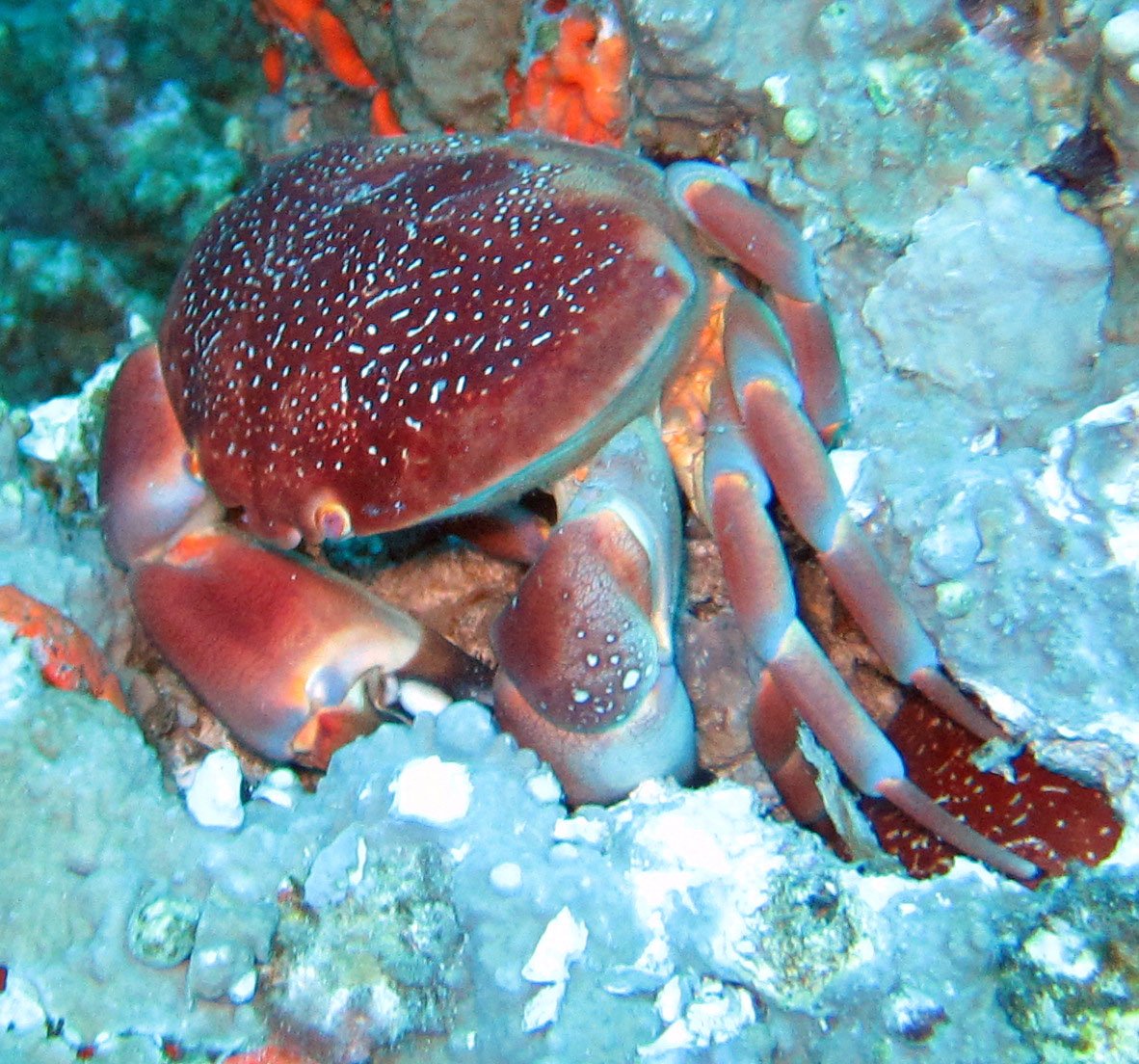 The crawling stages of this insect feed on human blood, which can result in severe itching. Head lice are usually located on the scalp, crab lice in the pubic area and body lice along seams of clothing. Body lice travel to the skin to feed and return back to the clothing.
The crawling stages of this insect feed on human blood, which can result in severe itching. Head lice are usually located on the scalp, crab lice in the pubic area and body lice along seams of clothing. Body lice travel to the skin to feed and return back to the clothing.
Who gets pediculosis?
Anyone may become louse infested under suitable conditions of exposure. Pediculosis is easily transmitted from person to person during direct contact. Head lice infestations are frequently found in school settings or institutions. Crab lice infestations can be found among sexually active individuals. Body lice infestation can be found in people living in crowded, unsanitary conditions where clothing is infrequently changed or laundered.
How is pediculosis spread?
For both head lice and body lice, transmission can occur during direct contact with an infested individual. Sharing of clothing and combs or brushes may also result in transmission of these insects. While other means are possible, crab lice are most often transmitted through sexual contact.:max_bytes(150000):strip_icc()/crab-varieties-and-types-1808801_final-ed157d0d448b4e6a9fee9797158255ab.png)
What are the symptoms of pediculosis?
Usually, the first indication of an infestation is the itching or scratching in the area of the body where the lice feed. Scratching at the back of the head or around the ears should lead to an examination for head louse eggs (nits) on the hair. Itching around the genital area should lead to an examination for crab lice or their eggs. Scratching can be sufficiently intense to result in secondary bacterial infection in these areas.
How soon do symptoms appear?
It may take as long as two to three weeks or longer for a person to notice the intense itching associated with this infestation.
For how long is a person able to spread pediculosis?
Pediculosis can be spread as long as lice or eggs remain alive on the infested person or clothing.
What is the treatment for pediculosis?
Medicated shampoos or cream rinses containing pyrethrins or permethrin are preferred for treating people with head lice. Products containing pyrethrins, permethrin or malathion are available over-the-counter, but those containing lindane or malathion are available only through a physician’s prescription.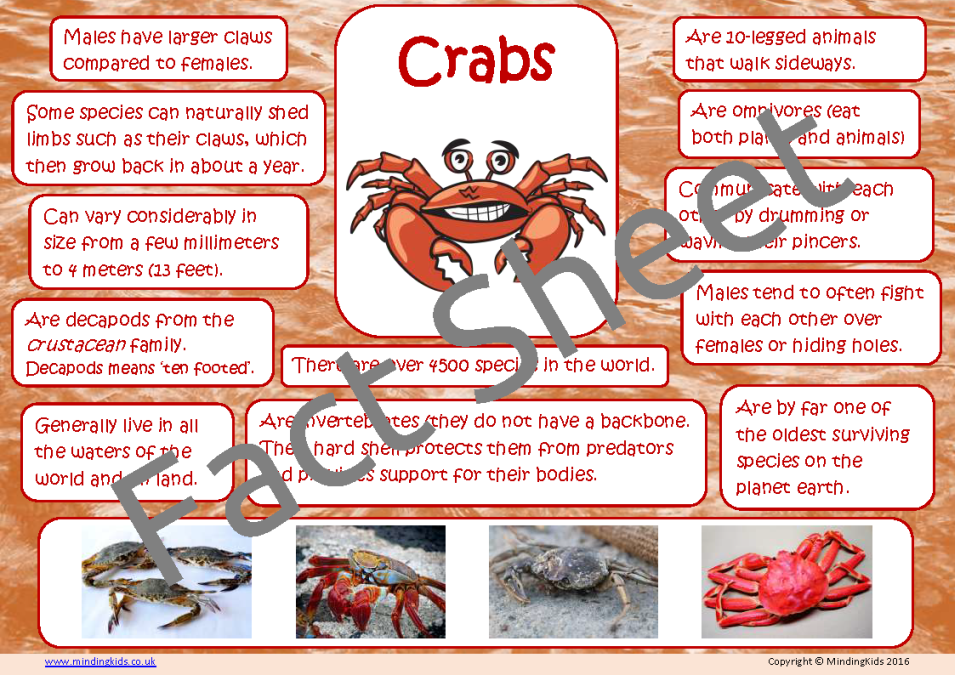 Lindane-based shampoos are not recommended for infants, young children, pregnant women, lactating women, the elderly, persons with HIV or seizure disorders, persons who have very irritated skin or sores where the lidane will be applied and persons who weigh less than 110 pounds. Retreatment after 7 to 10 days is often recommended to ensure that no eggs have survived. Nit combs are available to help remove nits from hair. Dose and duration of shampoo treatment should be followed carefully according to label instructions.
Lindane-based shampoos are not recommended for infants, young children, pregnant women, lactating women, the elderly, persons with HIV or seizure disorders, persons who have very irritated skin or sores where the lidane will be applied and persons who weigh less than 110 pounds. Retreatment after 7 to 10 days is often recommended to ensure that no eggs have survived. Nit combs are available to help remove nits from hair. Dose and duration of shampoo treatment should be followed carefully according to label instructions.
What can be done to prevent the spread of pediculosis?
Physical contact with infested individuals and their belongings, especially clothing, headgear and bedding, should be avoided. Health education on the life history of lice, proper treatment and the importance of laundering clothing and bedding in hot water or dry cleaning to destroy lice and eggs is extremely valuable. In addition, regular direct inspection of children for head lice, and when indicated, of body and clothing, particularly of children in schools, institutions, nursing homes and summer camps, is important.![]()
POLYKLINIKA.RU – a network of private medical clinics and consultative diagnostic centers in Moscow provides paid medical services in medical centers and medical clinics
0
+7 (495) 085-15-41
Consultation on registration and preparation for analysis
How to use the section
Analysis 522419
The crab test is the determination of IgE antibodies to the corresponding allergen.
Crabs are crustaceans that live in salty sea water (although there are species that live in fresh water). They are covered with a thick exoskeleton, have ten legs and one pair of claws. Snow crabs (Chionoecetes opilio) are the most widely used species from the Oreoniidae family.
Crabs are one of the most popular crustaceans consumed by humans, accounting for one fifth of all marine crustaceans caught, farmed and consumed worldwide. Crab meat is valued for its soft, tender and sweet taste. A distinction is made between white crab meat, which is obtained from claws and legs, and brown crab meat, which is obtained from the body. White meat has less fat, but brown meat has more omega-3 fatty acids. The orange or yellow eggs of the female crab can also be eaten.
White meat has less fat, but brown meat has more omega-3 fatty acids. The orange or yellow eggs of the female crab can also be eaten.
The preparation of crabs for eating differs from region to region. Some species are eaten whole, while others only use certain parts, such as the claws. Imitation crab, also called surimi, is made from minced fish that has been processed and colored to resemble crab meat, but usually does not contain real crab meat. Exposure to crab allergens can also occur in occupational settings, such as dust and sewage from seafood factories.
Most of the characterized shellfish allergens are found in the edible body parts (muscle areas) of various shellfish species. The main allergen in shellfish, tropomyosin, is present in the claws and tail of crabs, and arginine kinase is found in the leg muscles of the crab.
Crab is a strong allergen, sometimes causing dramatic manifestations. It can also be considered an occupational allergen for food workers. Shellfish allergy is one of the most common food allergies and usually persists throughout a patient’s life. Most people (about 60%) with shellfish allergies experience their first allergic reaction in adulthood.
Shellfish allergy is one of the most common food allergies and usually persists throughout a patient’s life. Most people (about 60%) with shellfish allergies experience their first allergic reaction in adulthood.
Symptoms can be severe and potentially life-threatening, including anaphylaxis. Even a very small amount of shellfish can provoke a reaction. Ingestion of crab in sensitized individuals may result in skin reactions including urticaria, angioedema, eczema, gastrointestinal symptoms (diarrhea, vomiting), systemic reactions (anaphylactic shock), and respiratory symptoms.
Exposure to steam while cooking shellfish has been reported to cause an allergic reaction in some cases due to the presence of allergenic proteins in the steam. Fishermen, processors, shellfish grinders, cooks and even restaurant workers are at risk of developing allergic reactions to shellfish. Smoking may increase the risk of developing snow crab occupational asthma, while atopy may increase the risk of developing occupational snow crab allergy.
Children with seafood allergy have increased levels of specific IgE antibodies with a greater diversity of epitopes than adults. Generally, there are two types of epitopes in food allergens: sequential and conformational. Sensitization to consecutive epitopes is associated with persistent allergy, and the patient may recognize more consecutive IgE epitopes. It has been found that in elderly patients with persistent food allergies, sensitization to specific sequential IgE epitopes is different from that of children, who may outgrow their allergies.
Common major allergens have been identified in crabs, crayfish, shrimp and lobsters. Tropomyosin is cross-reactive among various species of the mollusk family (especially crustaceans) such as shrimp, crabs and lobsters due to identical amino acids (up to 95-100%). In addition, tropomyosin, an invertebrate panallergen, is responsible for cross-reactivity between food and animal aeroallergens.
In invertebrates (crustaceans, molluscs, mites and cockroaches), tropomyosin and arginine kinase are cross-reactive panallergens due to similar phylogenetic identities.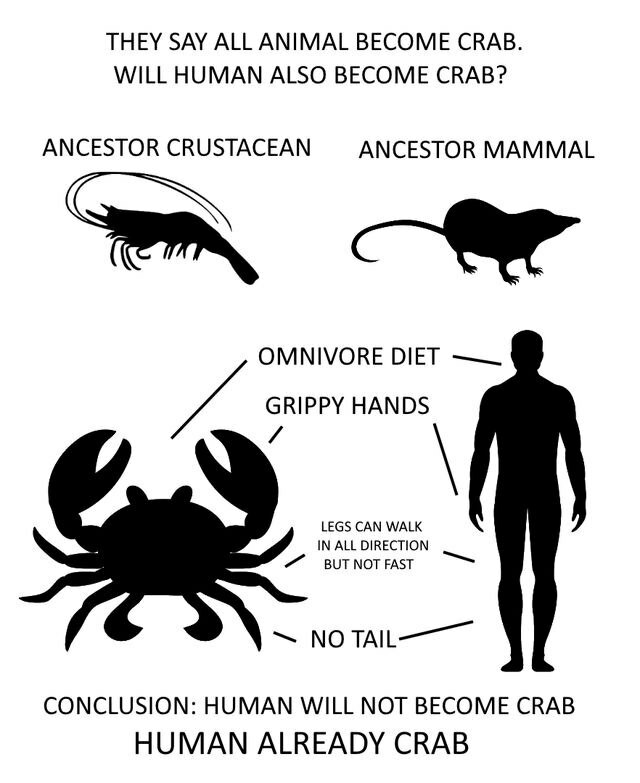 Studies have shown that tropomyosin and arginine kinase cross-react with Portunus pelagicus (blue swimming crab) allergens.
Studies have shown that tropomyosin and arginine kinase cross-react with Portunus pelagicus (blue swimming crab) allergens.
Patients allergic to the crustacean family often react to shellfish groups (such as squid or cuttlefish, abalone, snails, oysters, mussels, scallops, clams) as well as mites, cockroaches and parasites.
- Identification of allergens that may cause characteristic symptoms of an allergic disease.
- Suspicion of food allergies in both adults and children.
- Assessing the risk of developing an allergic response to crabs and other seafood.
- Children with food allergies in their parents.
- Doubtful results of skin tests.
modern high-precision equipment
low prices
work experience since 2008
Service CITO
wide range of studies
Why does modern medicine need horseshoe crabs? Chemwatch
Virtually unchanged since they first crawled the Earth over 450 million years ago, these ancient creatures (sometimes referred to as living fossils) have outlasted almost every other species – largely due to their incredibly robust immune systems. Their unique way of clotting in the presence of endotoxins makes them incredibly useful in detecting harmful bacteria.
Their unique way of clotting in the presence of endotoxins makes them incredibly useful in detecting harmful bacteria.
In this article we will take a closer look at horseshoe crabs and what they do for us.
What are horseshoe crabs?
The horseshoe crab is an arthropod species that, despite its name, is technically more closely related to spiders and scorpions than to crabs. There are four species of horseshoe crabs: Atlantic, mangrove, Indo-Pacific and Chinese horseshoe crab.
Limulus polyphemus aka Atlantic horseshoe crab
What makes them so special?
Everything is very simple – their blood. Surprisingly, the mesmerizing blue color – due to the high copper content – is not the most attractive feature of horseshoe crab blood. What scientists are most interested in is the “amoebocytes” it contains. These specialized cells protect horseshoe crabs from bacteria and viruses by gelling and coagulating around these invaders, preventing them from spreading and multiplying in the crab’s system. This immune defense mechanism is not unusual in animals. The uniqueness of the amoebocytes in horseshoe crab blood lies in their extreme sensitivity to lethal endotoxins (cell wall molecules of certain bacteria) and the rapid and violent clotting that occurs once they enter their bloodstream.
This immune defense mechanism is not unusual in animals. The uniqueness of the amoebocytes in horseshoe crab blood lies in their extreme sensitivity to lethal endotoxins (cell wall molecules of certain bacteria) and the rapid and violent clotting that occurs once they enter their bloodstream.
When this high sensitivity and rapid blood clotting process was first discovered in 1968, scientists immediately noted the potential for human health applications. Thus began the development of the Limulus Amebocyte Lysate (LAL) test to detect endotoxins produced by harmful bacteria.
The bright blue blood of the horseshoe crab is even more mesmerizing than it looks
Limulus Amebocyte Lysate (LAL) test
The LAL test is named after the creature whose observed immune behavior led to the discovery of this test, the Atlantic horseshoe crab (scientific name Limulus polyphemus ).
LAL’s production process involved collecting horseshoe crabs from the beach and shipping them to one of five production laboratories around the world. There, 30% of the blood is drained from them before returning them to the water. The collected blood is then processed, purified and lyophilized to obtain LAL.
There, 30% of the blood is drained from them before returning them to the water. The collected blood is then processed, purified and lyophilized to obtain LAL.
Prior to the introduction of the LAL test, endotoxin testing involved injecting a group of rabbits with a specific sample and closely monitoring their condition for the next four hours. Because the response of rabbits to endotoxins is similar to our human response, a subsequent fever in rabbits would indicate that the test sample was contaminated with endotoxins.
At the time, this method of testing in rabbits was considered a highly effective, albeit very laborious and costly, method for detecting endotoxins. It soon became clear that the LAL test offered a much cheaper, simpler, faster and more effective solution, and the test was adopted as the global standard for screening for bacterial contamination.
LAL testing requires the technician to simply add LAL to the sample and observe the response. Even at concentrations of 1 part per trillion, endotoxins will be detected almost instantly through the formation of a jelly-like clot in the sample.
The LAL test is incredibly important for detecting the presence of endotoxins in pharmaceuticals and medical implants/prostheses. Every product certified (including medical prostheses and implants) by the US Food and Drug Administration (USFDA) must first pass the LAL test. If you have ever received any kind of injection, you should thank the horseshoe crab for its safety!
Future LAL
LAL producers report that the measured mortality rate of 500,000 crabs bled annually is only 15%. However, recent independent studies have shown the number to be closer to 30%-75,000%, corresponding to 150,000-15,000 dead horseshoe crabs annually. Because LAL is so rare and highly prized (one liter can cost up to $1,000!), it’s no wonder manufacturers downplay their mortality rate.
The Atlantic horseshoe crab, currently classified as Vulnerable, is just one level away from Critically Endangered, soon to be followed by Critically Endangered, Extinct in the Wild and Extinct if no action is taken soon. The fate of this species will be in jeopardy if we don’t reevaluate current LAL harvesting practices, and it’s not only humans that will suffer when this species goes extinct. Many coastal birds, fish and turtles that feed on horseshoe crab eggs will also be affected by their extinction.
The fate of this species will be in jeopardy if we don’t reevaluate current LAL harvesting practices, and it’s not only humans that will suffer when this species goes extinct. Many coastal birds, fish and turtles that feed on horseshoe crab eggs will also be affected by their extinction.
Critically endangered birds are among the many animals that feast on the protein-rich horseshoe crab eggs.
However, this is not all bad news. In 1995, researchers at the National University of Singapore were able to identify and isolate the gene responsible for the sensitive blood clotting that characterizes LAL. This gene, known as “factor C”, was synthesized in yeast, leading to the creation of “recombinant factor C” (rFC). Synthetic CFL differs from organic CFL in that instead of clotting in response to the presence of endotoxins, synthetic CFL causes the endotoxins to emit fluorescent colors.
Although its discovery was a major breakthrough, regulatory and safety concerns regarding this alternative to LAL have slowed the mass adoption of synthetic LAL. Europe did not recognize rFC as an alternative to LAL until 2015, and the USFDA only approved the first drug tested with rFC in 2018. In 2020, the USP, which sets the scientific standard for drugs in the US, refused to recognize rFC as equivalent to LAL, insisting that its safety has not yet been proven. This is despite the fact that their European, Japanese and Chinese counterparts have recognized and accepted the use of synthetic LALs.
Europe did not recognize rFC as an alternative to LAL until 2015, and the USFDA only approved the first drug tested with rFC in 2018. In 2020, the USP, which sets the scientific standard for drugs in the US, refused to recognize rFC as equivalent to LAL, insisting that its safety has not yet been proven. This is despite the fact that their European, Japanese and Chinese counterparts have recognized and accepted the use of synthetic LALs.
As industry ideals and opinions change slowly, it is likely that the biomedical field will continue to sate their insatiable thirst for the blue blood of these ancient animals for the foreseeable future. This is hardly viable, and we can only hope that we do not reach the point where the choice is made for us through the disappearance of the horseshoe crab.
Chemwatch is here to help
If you have any questions about the safety, storage and labeling of your chemicals, feel free to contact us. Our friendly and experienced staff, backed by years of knowledge and experience, offers the latest industry information and advice on how to stay safe and comply with chemical regulations.
